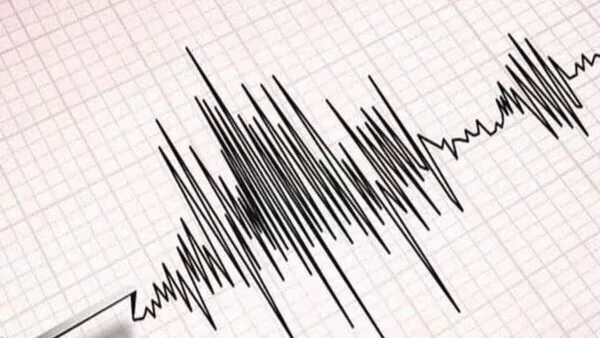
Earthquake Today: Magnitude 5.6 Quake Strikes Near Coast Of Ecuador
Earlier, EMSC had put the magnitude at 6.2, which was later revised to 5.6.
Meanwhile, a magnitude 5.1 earthquake struck Afghanistan's Hindu Kush region on Tuesday, the European Mediterranean Seismological Centre said. The quake was at a depth of 244 kilometers (152 miles), the EMSC said.
Further on October 21, an earthquake of magnitude 3.8 struck Pakistan, a statement by the National Center for Seismology (NCS) said. The earthquake occurred at a depth of 80km.
On the same day, another earthquake of magnitude 4.0 struck Tibet on Tuesday, the National Center for Seismology (NCS) said. The earthquake occurred at a shallow depth of 10km, making it susceptible to aftershocks.
Earthquakes in EcuadorEcuador is situated along the Pacific Ring of Fire, a geologically active zone characterised by frequent seismic and volcanic activity. The country's location atop the convergent boundary of the Nazca and South American tectonic plates renders it particularly susceptible to earthquakes.
Historical records indicate that Ecuador has experienced multiple high-magnitude earthquakes, with significant impacts on both urban centres and rural communities. The repeated seismic events underscore the necessity for rigorous monitoring and early warning systems.
Seismic hazards in Ecuador are not confined to a single region; both the Andean highlands and coastal areas are prone to tectonic activity. Earthquakes in the coastal regions are often associated with subduction zone movements, whereas those in the Andean region can result from complex fault interactions within the continental crust.
These geological factors contribute to variable earthquake magnitudes, intensities, and potential for secondary hazards such as landslides and tsunamis.
The Ecuadorian government, in collaboration with international scientific agencies, has implemented measures to mitigate earthquake-related risks. Strategies include the establishment of seismic monitoring networks, the development of emergency preparedness protocols, and public education campaigns aimed at fostering community resilience.
Despite these efforts, continued investment in infrastructure reinforcement and disaster response capacity remains essential, given the persistent threat posed by the country's tectonic setting.
Legal Disclaimer:
MENAFN provides the
information “as is” without warranty of any kind. We do not accept
any responsibility or liability for the accuracy, content, images,
videos, licenses, completeness, legality, or reliability of the information
contained in this article. If you have any complaints or copyright
issues related to this article, kindly contact the provider above.
Most popular stories
Market Reseach
- B2PRIME Strengthens Institutional Team's Growth With Appointment Of Lee Shmuel Goldfarb, Formerly Of Edgewater Markets
- BTCC Exchange Scores Big In TOKEN2049 With Interactive Basketball Booth And Viral Mascot Nakamon
- Ares Joins The Borderless.Xyz Network, Expanding Stablecoin Coverage Across South And Central America
- Primexbt Launches Stock Trading On Metatrader 5
- Solana's First Meta DEX Aggregator Titan Soft-Launches Platform
- Moonacy Protocol Will Sponsor And Participate In Blockchain Life 2025 In Dubai
- Primexbt Launches Instant Crypto-To-USD Exchange



















Comments
No comment